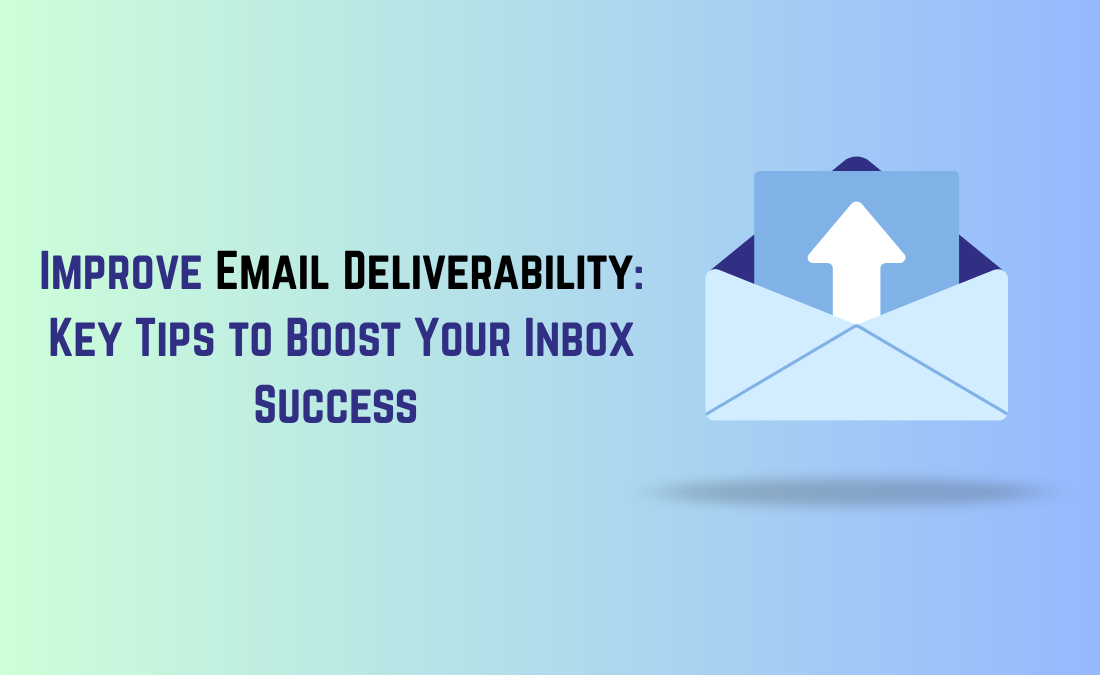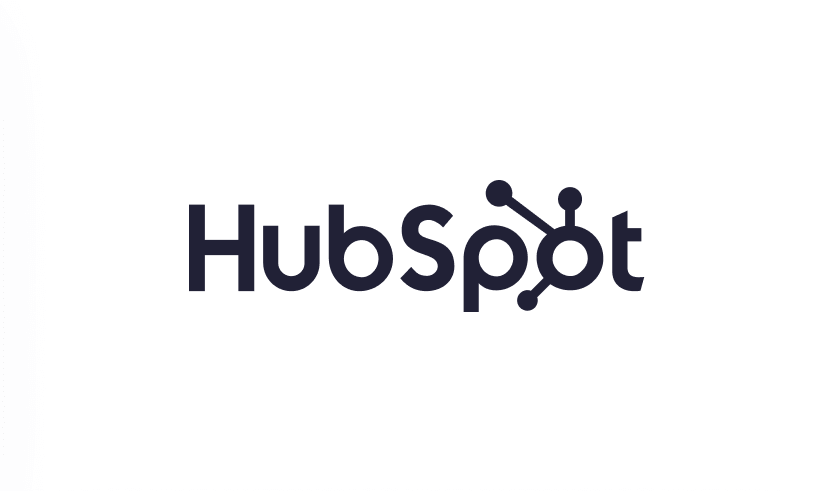Improve Email Deliverability: Key Tips to Boost Your Inbox Success
Learn how to improve email deliverability using latest tricks and get the best return on investment.
Email Deliverability Fundamentals That Actually Matter
Improving email deliverability is critical for any successful email marketing strategy. It's the bedrock of your efforts. Many marketers, however, confuse email delivery rates with inbox placement. Delivery rate simply means the email server accepted your message. Inbox placement, on the other hand, means your email actually landed in the recipient's inbox, not the spam or promotions folder. This key difference is often missed, leading to inaccurate assessments of campaign success.
Understanding The Difference Between Delivery and Deliverability
Imagine sending a letter. Delivery confirmation just means the post office accepted it. It doesn't guarantee the recipient will open it. A high email delivery rate doesn't mean your emails are being read. They could be sitting unread in a spam folder, hidden from your audience. This is why understanding email deliverability is so important.
Privacy regulations and mailbox provider requirements also have a big impact on how emails are handled. Providers like Gmail and Outlook frequently update their filtering algorithms, making inbox placement more difficult. Sending to inactive email addresses, for instance, can hurt your sender reputation. This means that even great email copy might get flagged as spam simply because you're sending to a disengaged audience. You might find this helpful: How to master email deliverability.
The Importance of Sender Reputation and List Hygiene
It's critical to comprehend the factors that affect sender reputation. You get into the inbox if you have a good sender reputation. Factors include spam complaints, authentication procedures, and engagement patterns (clicks, opens). This is highlighted in Mailgun's State of Email Deliverability 2025 report, which also highlights the significance of consistent list hygiene and the growing usage of DMARC.
These procedures are essential for avoiding spam filters and preserving a positive sender reputation. The report also emphasizes the importance of both deliverability and delivery rate for campaign optimization, highlighting the confusion between the two. Find out more here.
Maintaining a clean and active email list is just as crucial as keeping your car's engine in good working order. Using re-engagement campaigns and routinely eliminating inactive subscribers are essential components of list hygiene.. This not only improves email deliverability but also provides more accurate performance metrics. You can then focus on subscribers who value your content. This strong foundation in email deliverability fundamentals sets the stage for more advanced strategies and maximizes your email marketing ROI.
Global Deliverability Patterns That Shape Your Strategy
Your email's journey to the inbox is a global adventure, navigating the diverse landscape of international email practices. While compelling content is key, your audience's location and their relationship with email significantly impact your campaign's success. A winning strategy in one region might not translate to another.
Regional Variations in Inbox Placement
Unexpectedly, inbox placement rates vary greatly by location. Email deliverability is frequently higher for European audiences, possibly as a result of stringent data privacy laws like GDPR. Better permission-based marketing and list management are encouraged by these rules, which raise subscriber engagement and, in turn, improve inbox placement.
There are differences even within North America. Inbox placement in Canada is often higher than in the US. Variations in spam filtering, user behavior, and the popularity of particular email providers could all be responsible for this discrepancy. It's critical to comprehend the specifics of your target audience's location.
Because of changing mailbox provider requirements and privacy laws, email deliverability has grown more complicated. Global inbox placement rates are dropping, according to Validity's 2025 Email Deliverability Benchmark Report, which emphasizes the necessity for marketers to adjust.. Europe boasts the highest inbox placement at roughly 91%, while Asia-Pacific trails at approximately 78%.
To illustrate these regional differences, let's take a look at the table below:
Regional Email Deliverability Performance Comparison: A detailed breakdown of inbox placement rates across different global regions with performance insights.
This table highlights the varying inbox placement rates and challenges across different regions. As you can see, Europe performs well, while Asia-Pacific faces lower rates, likely due to engagement and infrastructure challenges. This data emphasizes the importance of a region-specific approach to email marketing.
Adapting to Regional Trends
You require the understanding of global trends for better email deliverability. Strict adherence to GDPR regulations is essential when targeting European audiences. This entails getting express consent and offering unsubscribe options that are easy to understand. Email deliverability can be significantly increased by segmenting lists according to engagement and regional preferences.
The effects of list cleaning are illustrated in this infographic. After cleaning, click-through rates increased from 12% to 18%, open rates increased from 15% to 22%, and bounce rates fell from 8% to 2%. It is obvious that list hygiene is an effective strategy for improving email performance.
Regional Insights for Global Success
Regional campaign data analysis aids in trend identification and strategy optimization. This could entail modifying the content to appeal to local cultural preferences or modifying the sending schedule to coincide with regional peak email activity. Even though they are minor, these data-driven changes can have a big impact on email deliverability worldwide. You can negotiate regional differences and improve the effectiveness of your email marketing campaigns by being aware of the subtleties of the global email landscape.
Building Sender Reputation That Opens Doors
Your sender reputation is critical for email marketing success. It determines whether your carefully crafted messages land in the inbox or get lost in spam. Just like a credit score, your sender reputation tells email providers how trustworthy you are. This section explores how to build and maintain a strong sender reputation, ensuring your emails get the attention they deserve.
Factors Influencing Sender Reputation
Email providers use several key factors to evaluate your sender reputation. Engagement metrics, such as open and click-through rates, show audience interest and have a positive impact. High open rates indicate that your subscribers are interested in your content. High click-through rates mean they're taking action on your calls-to-action. Both are strong indicators of a healthy sender reputation.
On the other hand, high spam complaint rates suggest your content isn't hitting the mark. This damages your standing with providers. Even if your emails are technically delivered, low engagement can land them in the spam folder. This makes it essential to track these metrics and refine your email copywriting strategy accordingly.
Email authentication is another vital element. It's like verifying your identity to prevent fraud. Strong authentication protocols, including SPF, DKIM, and DMARC, assure email providers that your emails are genuinely from you. These protocols also protect recipients from phishing and ensure your messages appear legitimate.
Implementing Bulletproof Email Authentication
Setting up these authentication protocols is essential for building trust and improving email deliverability. SPF (Sender Policy Framework) identifies the mail servers allowed to send emails on behalf of your domain. DKIM (DomainKeys Identified Mail) adds a digital signature, confirming authenticity. DMARC (Domain-based Message Authentication, Reporting & Conformance) links SPF and DKIM, allowing you to control how providers handle emails that fail authentication.
Think of it like sending a package with multiple security seals. SPF declares the authorized couriers. DKIM is the tamper-proof seal, and DMARC is the instruction manual for the recipient if the seals are broken. Together, they create a strong defense against spoofing and enhance your sender reputation.
Warming Up New Domains and IPs
Before you launch a new domain or IP, must perform a warm up period. Sending high email volumes from a fresh IP can trigger spam filters. Gradually increasing your sending volume lets providers recognize your sending patterns. This avoids sudden spikes that raise red flags.
Regularly checking your sender reputation using available email deliverability tools and checklists is also crucial. Staying informed about metrics and addressing any issues ensures you maintain a good sender standing and consistently reach your audience's inbox. Dedication to building a strong sender reputation is key to long-term email marketing success.
Winning In The Crowded Email Landscape
With billions of email users worldwide, getting your emails noticed is a real challenge. Standing out from the inbox clutter requires a well-defined strategy. This means understanding what successful email marketers do and putting those tactics into practice to improve email deliverability.
Segmentation Strategies For Better Engagement
Advanced segmentation is a powerful tool. It's about more than just demographics. You can group subscribers based on behavior, purchase history, and how they interact with your emails. For example, create a segment of users who haven't opened an email in six months and send them a targeted re-engagement campaign. Segmenting allows you to tailor messaging to specific interests. More relevant emails lead to higher open rates. This signals to email providers that your content is valuable, which improves your sender reputation and email deliverability. Learn more about email segmentation with this helpful resource: How to master Ecommerce email marketing.
Crafting Compelling Subject Lines and Preview Text
Your subject line and preview text are the first things a recipient sees. They need to be captivating without being spammy. A clear, concise subject line that accurately reflects the email content is key. This builds trust with subscribers and helps avoid spam filters. A good subject line is just the start. Preview text adds context and encourages opens. Use this space to highlight benefits or create urgency. [See examples of high-converting subject lines here (Internal Link to Copywriting Guide)].
Timing Optimization and Personalization
When you send your emails matters. Sending at the right time, when your audience is most likely to engage, improves open and click-through rates. Think about time zones and email checking habits. Personalization and dynamic content also impact your inbox placement. Tailoring your message based on individual subscriber data shows relevance and increases engagement. This positive engagement, in turn, builds your sender reputation and improves email deliverability.
The email marketing landscape is massive, with about 4.6 billion email users projected worldwide by 2025. This underscores the importance of email marketing but also highlights the competitive nature of getting noticed. You can find more information about these email statistics here. In North America, Canada has a high inbox placement rate of roughly 90%, while the U.S. sits around 85%.
By using these strategies, you can improve your email deliverability and enhance your overall email marketing performance, allowing you to better reach and engage your target audience.
List Management Strategies That Actually Work
Clean, engaged email lists are crucial for effective email deliverability. Think of your email list like a garden. If you neglect it, weeds take over and choke the life out of your healthy plants. Similarly, a neglected email list filled with inactive or invalid addresses will hurt your email marketing efforts and damage your sender reputation.
Identifying Inactive Subscribers
Inactive subscribers are those who consistently don't open or click your emails. This inactivity negatively impacts your email deliverability and skews your campaign metrics. Identifying these subscribers is the first step toward a healthier, more responsive list. This means looking beyond simple bounce rates and examining engagement patterns. For example, subscribers who haven't opened your emails in six months might be considered inactive. However, you might want to define inactivity based on your specific audience and sending frequency. Some businesses might consider three months of inactivity a warning sign, while others might wait a full year.
Re-Engagement Campaigns
Instead of simply removing inactive subscribers, try re-engagement campaigns. These targeted campaigns aim to rekindle subscriber interest and prompt them to interact with your content again. You could offer special discounts, highlight popular content, or simply ask subscribers to update their preferences. A successful re-engagement campaign can recover valuable subscribers and improve your email deliverability. However, for persistently inactive subscribers, removal is the best option for maintaining a good sender reputation and improving deliverability.
Advanced Segmentation for Deliverability
Segmentation takes list management a step further. You divide your list into smaller, more focused groups based on demographics, behavior, purchase history, or other relevant factors. This allows you to tailor content to specific interests, which improves open and click-through rates. By sending more relevant content, you boost engagement. This tells email providers like Gmail that your emails are valuable. This can improve your sender score and increase the chances of your emails reaching the inbox.
Automating List Hygien
Maintaining a healthy email list shouldn't require constant manual effort. Automating list hygiene processes will save you time and ensure consistent list health. Consider automated workflows that tag inactive subscribers, trigger re-engagement campaigns, and remove consistently unengaged subscribers. Using a marketing automation platform like Klaviyo can help streamline this process.
The following table provides a quick overview of important email list metrics and what you can do to improve email deliverability.
Email List Health Metrics And Action Thresholds: Key performance indicators for list health with recommended action points and industry benchmarks
This table offers actionable thresholds for key metrics, helping you quickly identify and address potential issues. Regularly monitoring and optimizing your list management practices is essential for maximizing email deliverability and achieving long-term success in your email marketing campaigns.
Monitoring and Optimization That Drives Results
Exceptional email deliverability isn't a set-it-and-forget-it achievement. It's an ongoing process, a continuous journey of monitoring and optimization. Like a gardener tending their plants, you must consistently nurture your email program for it to thrive.
Essential Tools and Metrics
Improving email deliverability requires the right email deliverability tools and a keen understanding of key metrics. Inbox placement monitoring tools offer invaluable insights into where your emails land – the inbox, spam folder, or promotions tab. Knowing your emails' final destination is crucial for understanding your true reach. Reputation scoring systems provide a deeper dive into your sender reputation. Factors such as engagement, spam complaints, and authentication are analyzed to gauge your trustworthiness. Understanding your sender score highlights areas for improvement and helps build a solid reputation with email providers like Gmail.
Effective Testing Protocols
Testing is paramount for optimizing your email program. A/B testing lets you experiment with different elements like subject lines, send times, and content to determine what resonates best with your audience. Testing two different subject lines, for example, reveals which generates a higher open rate. Comprehensive testing protocols across your entire email program identify potential email delivery issues before they impact your campaigns. Testing your emails across various email clients (Apple Mail, Outlook, etc.) and devices ensures they render correctly.
Interpreting Deliverability Data and Taking Action
Data collection is just the beginning. Interpreting the data and applying the insights is essential for improving email deliverability. This means analyzing complex data and translating it into actionable improvements. A high bounce rate, for instance, might indicate issues with your list hygiene, prompting you to clean your list and remove invalid addresses. For more in-depth information on how to run an email delivery test, check out this resource: How to master common email deliverability questions.
Frameworks for Regular Audits and Optimization
Maintaining top-notch email deliverability hinges on regular audits and optimization cycles. Periodically review your entire email program, analyze key metrics, and make adjustments based on your findings. Consider these reviews regular check-ups for your email health. This proactive approach allows you to address potential issues before they escalate, ensuring continued success. Consistent monitoring, testing, and optimization dramatically improves your email deliverability, guaranteeing your messages reach the intended recipients.
Key Takeaways For Deliverability Success
This section outlines a straightforward action plan for achieving and maintaining top-notch email deliverability. We'll break down key strategies into practical checklists and roadmaps, adaptable for various organizational structures and levels of technical expertise. Each takeaway includes specific success metrics, potential problems, and realistic timelines for noticeable improvement. You'll discover how to prioritize initiatives based on your current challenges and available resources, along with proven templates for ongoing monitoring and optimization.
Prioritize List Hygiene
Keeping a healthy email list is crucial. Regularly cleaning your list by removing inactive subscribers—those who haven't engaged in a set timeframe (e.g., six months)—is essential. This prevents sending emails to invalid addresses, which can harm your sender reputation and, as a result, your email deliverability. Consider implementing re-engagement campaigns to try and reconnect with inactive subscribers before removing them. This can help you retain valuable contacts and boost overall engagement.
Key Metric: Bounce rate (aim for < 2%) Pitfall: Neglecting consistent list cleaning Timeline: Expect improvements within 1-3 months
Authenticate Your Emails
Think of email authentication as your digital signature, verifying your identity. Implementing SPF, DKIM, and DMARC shows email providers that your emails are legitimate. Learn more about email authentication protocols. This protects your recipients from phishing and builds trust with email providers, ultimately improving inbox placement.
Key Metric: Inbox placement rate (monitor regularly) Pitfall: Setting up authentication protocols incorrectly Timeline: Notice immediate improvements with correct implementation
Focus on Content Relevance
Sending targeted and engaging content is essential. Segment your list based on demographics, behavior, and preferences to customize messages for specific interests. Relevant emails lead to higher open and click-through rates, signaling to email providers that your content is valuable.
Key Metric: Open and click-through rates (track changes over time) Pitfall: Sending generic, one-size-fits-all emails Timeline: See progressive improvement as you refine segmentation
Monitor and Optimize Continuously
Email deliverability is an ongoing process. Regularly check key metrics like bounce rate, spam complaints, and inbox placement. Use this data to pinpoint areas for improvement and adjust your approach accordingly. This adherence to email deliverability best practices ensures long-term success. Consider using A/B testing for subject lines, content, and sending times to optimize performance.
Key Metric: Sender reputation score (aim for a high score) Pitfall: Disregarding deliverability data and feedback Timeline: Expect continuous optimization and improvement
Ready to improve your email marketing and see real growth? Explore advanced email marketing strategies with Chase Dimond.


























